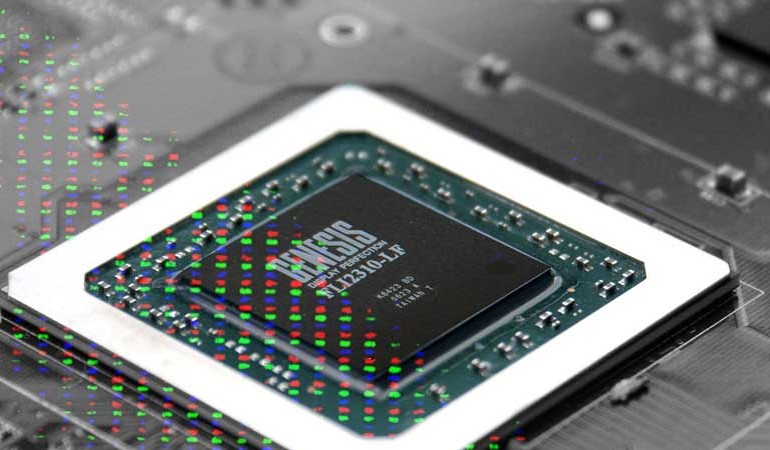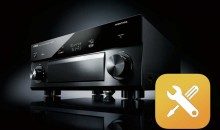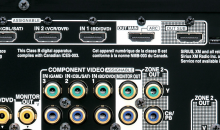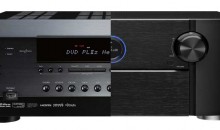Video Upconversion: What You Need to Know
Video upconversion is one of those “features” listed on a device that you don’t understand, or a desperately-desired feature that you can’t figure out is included on your AV receiver or other AV device. The trouble is, video upconversion can mean a few different things. The key is to understand your needs, and then understand the capabilities of the products you’re looking at and using. All video upconversion is accomplished by computational processes that are executed via a chipset. Chip and technology manufacturers include such names as Silicon Image, Genesis (Faroudja), MediaTek, Marvell, and DarbeeVision.
Analogue Video Upconversion
At its most basic, analogue video upconversion is when an AV receiver or video processor can take a lower resolution or quality analogue video signal and upconvert or “increase it” to a higher resolution or format. When kept in the analogue domain, the highest output is a component video connection. When we say “higher” we generally mean better. But, a better format doesn’t necessarily equal a better signal any more than a nice highway can make a jalopy any more fun to drive. Analogue video conversion can take. for example, a composite video signal that is fed into the little yellow connector on an AV receiver and send it out the component video outputs to your television or projector. It’s a way of being able to connect devices (like a Nintendo Wii or VCR, for example) that may not be compatible with high-end video connections and output the video content to your display.
Video Upconversion to High Definition Resolution
Building on what we just explained, higher-quality outputs like component video also allow for higher resolution to the display. That means that you can convert the 480i resolution of a standard definition composite video signal to a high definition resolution video signal via the component video outputs (again, if we are keeping everything in the analogue domain). That doesn’t make your signal better, per se, but it does mean that you only need one cable (technically component video is three cables but they are grouped together) for your display. It also means that if you happen to have a really nice AV receiver and a mediocre display, you can experiment with the video upconversion of the receiver compared to what the display would do if it upconverted a standard 480i signal to its native resolution. In general, you will only get modest video quality improvements through video upconversion—and only if you have a video processing device that is particularly good at enhancing and scaling standard definition content.
Video Upconversion to HDMI
This is where most users fall today with respect to needing video upconversion. The idea is to get the video to output via the AV receiver’s HDMI output. That way, you can send all of your sources to the TV (which might be mounted above a fireplace) without having to run another cable. The difference here is that there is actually an additional step going on: Analogue to digital video conversion. Your analogue video signals aren’t just being converted to a higher resolution, they are also being converted to a digital video format. Not all HDMI upconversion is the same. Some systems will convert analogue video to HDMI but not provide anything beyond that, while other AV receivers will have full-blown video processors onboard that can adjust or tweak contrast, noise reduction, SDR to HDR, and other video attributes to compensate for older or simpler displays that might not have those options.
Devices that Provide Video Upconversion
While video upconversion can occur on an Ultra HD Blu-ray player (or regular Blu-ray player if that is all you have) that takes 720x480i standard definition video and outputs it as 720p/1080i/1080p/4k, the kind we’re talking about involves transcoding from an external source. A Blu-ray player takes the signal present on a disc (like a DVD) and upconverts it via the HDMI port. An AV receiver takes an external analogue video source (Wii, DVD player, CableTV box, etc) and converts that signal to digital, outputting it via HDMI. The advantages of a system like this are obvious: You can take any legacy analogue source you may have and get it to your HDMI-equipped television.
4K Upconversion is Already Here
When we used to talk about video upconversion, it was always in the context of going from standard definition (SD) to high definition (1080p/4K). Now, many AV surround receivers are upconverting standard and high definition video to 4K resolution. Soon, we’ll be seeing upconversion to 8k as those displays become more prevelant. Because of the newness of 8k, entry level receivers aren’t providing this feature (merely pass-through), but expect to see this type of upconversion on ever-lowering price points as time goes by.
Conclusion
Video upconversion has quickly gone from a convenience to a necessity with modern HDMI-equipped televisions. How well the upconversion is processed depends on the chipset used and how well the manufacturer implements the technology. One thing is for certain, as more and more video sources go digital, this is a feature that is depreciating in importance for analogue sources. What is swiftly replacing HD upconversion is upconversion to 4K as well as continuing advances in frame rate and video interpolation features.







Pingback: Nintendo 64 HDMI output – coming soon! | N64 Squid
Pretty fascinating and informative information. Saved to fav …
Appreciate the excellent read.
So, which mainstream DVD players and Blu-Ray players do the best job of upconverting DVD to 1080p? Used or new, doesn’t matter. I am looking to get the best possible picture quality out of my legacy DVD collection when displayed on a top-notch 1080p display (Panasonic TC-P65VT60).
The TV may do a better job than a BD player at this. Unless you purchase a player with a known chipset that exceeds the upconversion capabilities of your television, I’d run the output as widescreen native and let the TV do its thing.